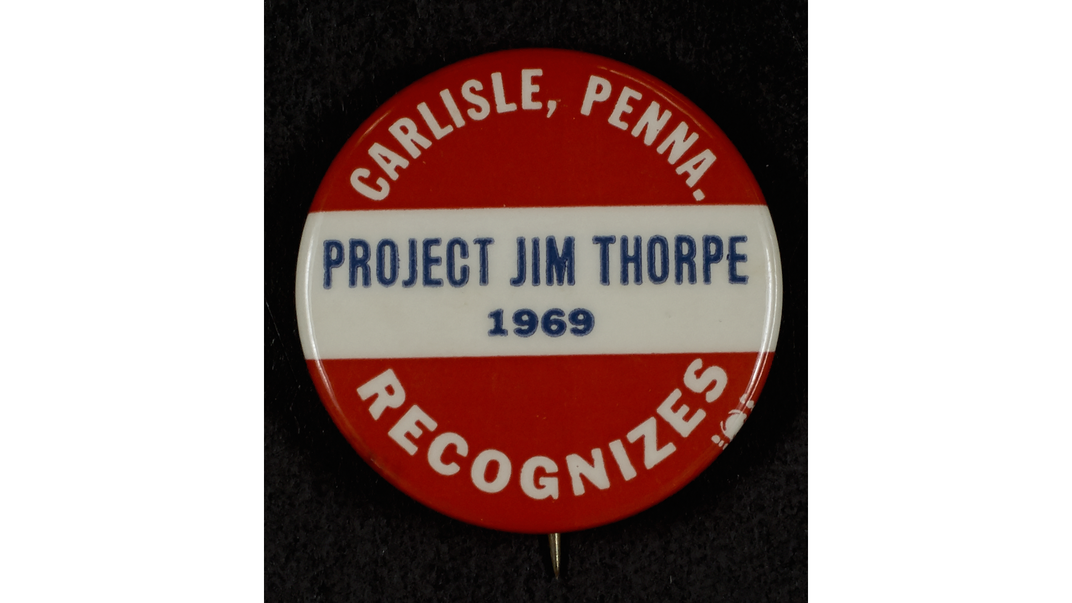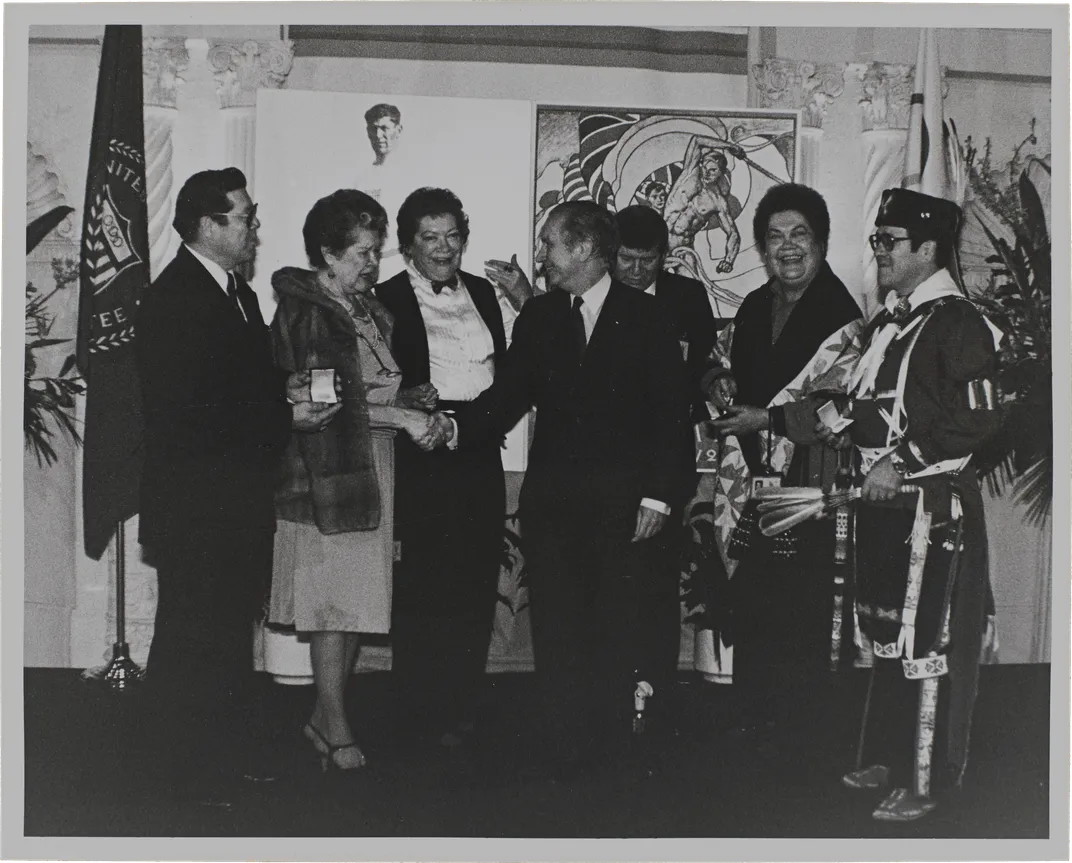NATIONAL MUSEUM OF THE AMERICAN INDIAN
Happy Birthday, Jim Thorpe! We’re Celebrating by Making His Daughter’s Archives More Accessible Online
The exact date of Jim Thorpe’s birth is unknown, but it is generally believed that the first Native American to win an Olympic gold medal for the United States—regarded by many as one of the greatest athletes of all time—was born on May 22, 1887, or May 28, 1888. In honor of his birth, the Smithsonian Transcription Center has added eight significant projects from the Grace Thorpe collection in the museum’s archives, including Grace’s “Memories of Dad” and her answer to the frequently asked question “How does it feel to be Jim Thorpe’s daughter?” Read more about Grace Thorpe’s life, then consider becoming a Smithsonian digital volunteer and contributing to the Transcription’s Center’s work.
:focal(800x204:801x205)/https://tf-cmsv2-smithsonianmag-media.s3.amazonaws.com/blogging/featured/Jim_Thorpe_for_Grace_1600x840.jpg)
Although the exact date is unknown, it is generally believed that James Francis Thorpe (Sac and Fox [Sauk]) was born on May 22, 1887, or May 28, 1888, in Indian Territory near present-day Prague, Oklahoma. Jim Thorpe went on to become the first Native American athlete to win an Olympic gold medal for the United States and is considered by many to be one of the greatest athletes of all time.
In 1912, Thorpe won the pentathlon and decathlon at the Stockholm Olympics. The next year, however, the International Olympic Committee stripped Thorpe of his amateur status and his medals, and removed his winning times from the official record, after it determined that he had been paid to play baseball for a summer. Thorpe’s athletic legacy went beyond the Olympics, but for many, including Thorpe’s children, the erasure of their father’s records was an injustice that needed to be rectified.

Much of the decades-long fight to reinstate their father’s Olympic records is documented in the Grace Thorpe collection, donated to the National Museum of the American Indian Archives Center in 2015 by Grace Thorpe’s daughter, Dr. Dagmar Seely, and granddaughter, Tena Malotte.
Grace, born in Yale, Oklahoma, in 1921, was the youngest of Jim Thorpe’s children from his marriage to Iva Miller. Like her father, Grace attended Haskell Indian school as a child. Following her parents’ divorce, she moved between their homes in Chicago and California. Grace went on to serve in the Women’s Army Corps in World War II and stayed in Japan for several years following the war as chief of the recruitment section at Gen. Douglas MacArthur’s headquarters.
After returning to the United States and raising her family, in the late 1960s Grace became involved in Native American issues, working as economic development conference coordinator for the National Congress of American Indians and leading public relations for Indians of All Tribes during the occupation of Alcatraz. Grace remained politically active throughout the 1970s and ’80s, in addition to fighting for the restoration of her father’s Olympic titles. In 1982 the Thorpe family was informed that Jim Thorpe would be reinstated as the winner of the 1912 pentathlon and decathlon. They were presented with medals by the International Olympic Committee in January of the following year.

In later years, Grace served the Sac and Fox Nation as a tribal judge and health commissioner. She also became an environmental activist and opposed storing nuclear waste on tribal lands. She also meticulously gathered interviews, articles, and photographs related to both her work and her father’s legacy. These records can all be found digitized on the Smithsonian Online Virtual Archive.
In honor of Jim Thorpe’s birthday, the museum has made eight significant projects from the Grace Thorpe collection newly available at the Smithsonian Transcription Center. These include Grace’s “Memories of Dad” and her answer to the frequently asked question “How does it feel to be Jim Thorpe’s daughter?” When you take a look at the new Grace Thorpe materials on the Transcription Center, make sure to see as well Grace’s letters to her mother from Haskell Indian School and a scrapbook highlighting Grace’s activism in the early 1970s.
The Transcription Center makes Smithsonian’s collections more accessible through ongoing collaboration between digital volunteers and Smithsonian librarians, archivists, and museum staff. Transcribing historic and scientific material for the institution’s archives is as easy as finding a project you’d love to work on and signing up to be a digital volunteer.
Rachel Menyuk is a processing archivist in the National Museum of the American Indian Archives Center. Her profile of the Mohegan ethnobotanist Gladys Tantaquidgeon (1899–2005) appears in Smithsonian American Women: Remarkable Objects and Stories of Strength, Ingenuity, and Vision from the National Collection. She is also a proud member with Pointless Theatre Co. and an active supporter of the D.C. theatre and arts community.
